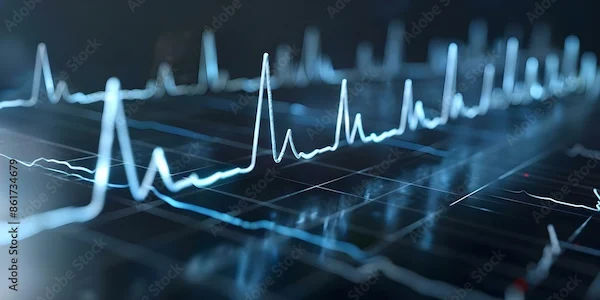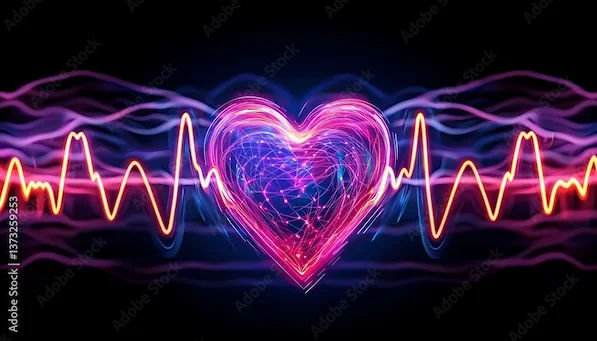Echocardiogram: Types, Procedure, Benefits, and Limitations
Echocardiogram is a standard test that helps visualise the blood flow through one’s heart and valves. Learn about its uses, types, benefits, and limitations.

Written by
Last updated on 3rd Jul, 2025
An echocardiogram or echo is a non-invasive diagnostic test to outline the movement of one’s heart. It uses high-frequency sound waves (ultrasound) to capture images of the heart's chambers and valves. Developed in the 1950s by Carl Helmuth Hertz and Inge Edler, the M-mode echocardiogram formed the foundation for modern echocardiography techniques.
With technological evolution, echocardiograms have also evolved into various forms, such as Doppler and transoesophageal techniques. Here’s more about this method.
Types of Echocardiograms
Discussed below are the four different types of echocardiograms:
Transthoracic Echocardiogram (TTE)
Also known as heart ultrasound, the transthoracic method is a non-invasive technique to check how blood flows through one’s heart and valves. This is a standard process in which a transducer is placed on the chest wall to capture the images of the heart.
Transoesophageal Echocardiogram (TEE)
Doctors suggest a transoesophageal technique for a detailed heart image over the standard one (TTE). In this method, a specialised probe is inserted into an individual’s oesophagus to record the aortic blood flow of the heart.
Stress Echocardiogram
It records the response of one’s heart just after the body performs a physical activity. Stress echocardiogram helps check for coronary artery disease. In case the patient cannot perform exercise, doctors give specific medicines to attain a similar heart condition after exercise.
Doppler Echocardiogram
The speed and direction in which blood flows within an individual’s heart are measured through a Doppler echocardiogram. It captures the changes in sound waves while bouncing off the blood cells and moving through the blood vessels and heart to detect leaking or blocked valves and check the blood pressure in arteries.
Benefits of an Echocardiogram
The benefits of an echocardiogram are listed below:
An echocardiogram helps detect cardiac issues at an early stage, which gives enough time for treatment procedures.
It provides essential information about the heart condition and helps doctors decide the right treatment procedure.
With an echocardiogram, doctors can assess a patient’s risk profile and implement preventive strategies accordingly.
An echocardiogram helps diagnose various heart conditions like the following:
Cardiomyopathy (a condition that affects one's heart muscles)
Valve disease (affects the connectors of heart chambers)
Infective endocarditis (infection in the heart chamber or valves)
Pericardial disease (affects the two-layered sac covering the heart’s outer surface)
Congenital heart disease, etc.
An echocardiogram can also detect changes in one’s heart, like blood clots, cardiac tumour, aortic aneurysm, etc. For patients with existing heart conditions, an echocardiogram helps assess the condition to check the progression. Besides, doctors suggest this test before cardiac surgeries to evaluate heart function accurately.
Echocardiogram Procedure Involved
The echocardiogram procedure includes the following three steps:
Preparation for the Test
While preparing for the test, the healthcare provider guides the individual with the following instructions:
Individuals should avoid smoking on the day of the echocardiogram.
Drinking (only water is allowed) or eating should be avoided for four hours before the echocardiogram.
Caffeine, like tea, coffee, decaf drinks, some painkillers, etc., should be avoided for at least 24 hours before this test.
If the individuals are under any medication, they must convey to the doctor conducting an echocardiogram. The doctor may suggest avoiding heart-related medicines on the day of the echo. Besides, there can also be a change in the dosage of diabetes or other drugs.
In a stress echocardiogram, the individual needs to ride a stationary bike or walk. So, one should wear comfortable shoes and clothes during this test.
Note: Stress echocardiogram needs more preparation than other techniques.
During the Test
During an echocardiogram, small metal electrodes are placed on the chest, which are connected to a machine through wires. A gel is applied to allow sound waves to pass through the skin, and a probe sends sound waves through the chest. These waves bounce off the heart, creating images that appear on a video monitor.
The procedure usually lasts less than an hour, and the room may need to be darkened for clearer visibility. The technician may also ask the patient to hold their breath for better image quality.
Post-test Procedures
After the test, individuals can continue with their usual diet and other activities as there’s no such special caring requirement after this test. However, if the doctor restricts any diet or activity, the individual must strictly follow that.
A cardiologist interprets the echocardiography image result, and the final report is sent to the patient’s healthcare professional.
Interpretation of Echocardiogram Results
Once the test is done, the doctor reviews the images and check if the patient has any of the following heart issues:
Abnormality in the heart chamber size
Thin or thick ventricle walls
Damage in the heart muscle tissue
Poor valve functioning
Blood clots or tumours in the heart, etc.
Note: In case of any concerning results, the healthcare provider will ask for further tests.
Here’s a look at the normal and abnormal results:
Normal: A normal echocardiogram reveals normal heart valves and chambers and normal heart wall movement.
Abnormal: An abnormal echocardiogram can indicate various conditions. Some abnormalities are minor and pose little to no risk, while others may suggest serious heart disease. In such cases, additional tests conducted by a specialist are often necessary. It is crucial to discuss your echocardiogram results thoroughly with your healthcare provider.
Limitations and Risks of Echocardiogram
Despite its multiple advantages, echocardiogram has some limitations. Here are they:
It may, at times, fail to check coronary arteries.
Echocardiogram fails to detect electrical problems or conduction disorders.
This method can only detect structural changes in one’s heart; for further interventions, doctors suggest specific tests.
Though an echocardiogram is a safe process, here are some of the complications that may arise under certain circumstances:
Sometimes, agitated saline or contrast injection is used while conducting the test, which can cause allergic reactions. Thus, contrast injections should not be used for pregnant patients.
During a transoesophageal echocardiogram, an individual may experience a sore throat or irritation as the tube inserted into the oesophagus can scrape it. In most rare cases, it can cause oesophageal perforation (puncture in the oesophagus).
Sometimes, the medicines used in stress echocardiograms to increase the heart rate of an individual can cause irregular heartbeat and lead to a heart attack.
Recent Advances and Future Trends in Echocardiogram
With recent innovations like 3D echocardiography or other advancements in imaging technology, more detailed visualisation of the cardiac structure can be achieved. This helps assess cardiac issues with enhanced accuracy.
Moreover, the emergence of AI in echocardiograms has the possibility of interpreting the results with precision. It can identify patterns that may not be apparent to human observation. It can provide real-time feedback on the patient’s condition and has features like auto-measurement and auto-reporting to make the procedure seamless and effective.
Conclusion
An echocardiogram plays a crucial role in assessing and managing one's heart condition. It helps doctors proceed with the proper treatment procedure at an early stage, saving the patient from further complications. Regular check-ups can help maintain optimal heart function and ensure overall cardiovascular well-being.
Consult Top Cardiologist
Consult Top Cardiologist

Dr. Anand Ravi
General Physician
2 Years • MBBS
Bengaluru
PRESTIGE SHANTHINIKETAN - SOCIETY CLINIC, Bengaluru

Dr. Zulkarnain
General Physician
2 Years • MBBS, PGDM, FFM
Bengaluru
PRESTIGE SHANTHINIKETAN - SOCIETY CLINIC, Bengaluru

Dr. E Prabhakar Sastry
General Physician/ Internal Medicine Specialist
40 Years • MD(Internal Medicine)
Manikonda Jagir
Apollo Clinic, Manikonda, Manikonda Jagir
(125+ Patients)

Dr. Tripti Deb
Cardiologist
40 Years • MBBS, MD, DM, FACC, FESC
Hyderabad
Apollo Hospitals Jubilee Hills, Hyderabad

Dr. Janjirala Seshivardhan
Cardiologist
7 Years • MBBS,DNB(GM),DM(Cardiology)
Manikonda Jagir
Apollo Clinic, Manikonda, Manikonda Jagir


